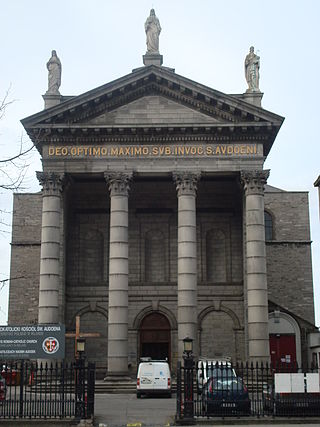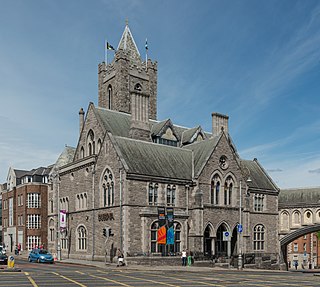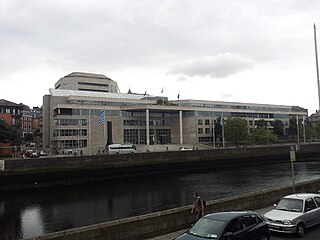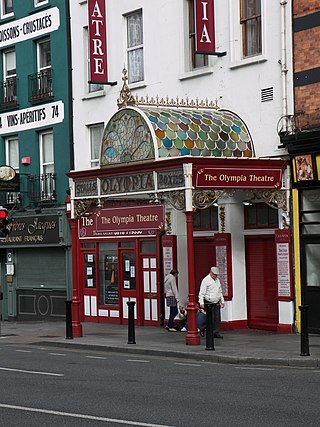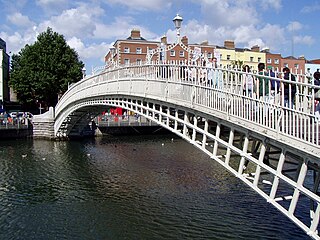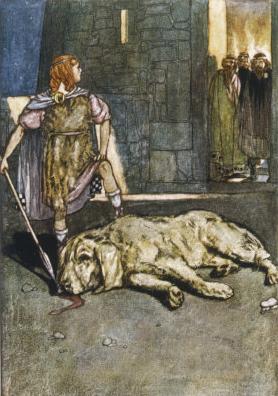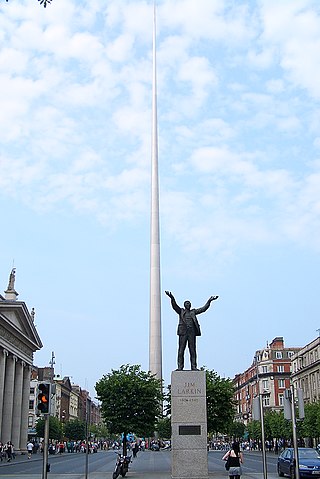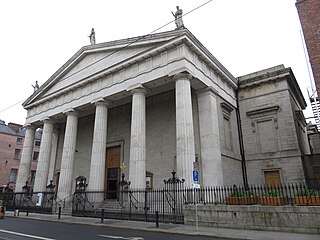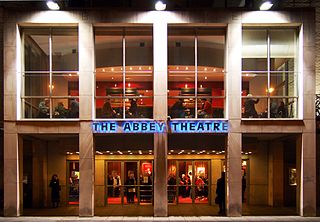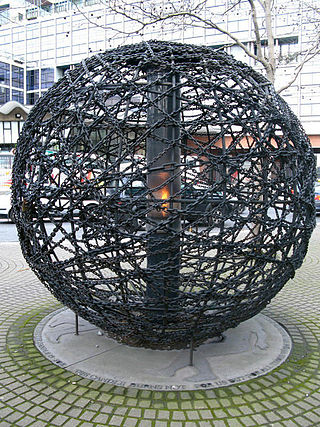Self-guided Sightseeing Tour #1 in Dublin 7, Ireland
Legend
Guided Free Walking Tours
Book free guided walking tours in Dublin 7.
Guided Sightseeing Tours
Book guided sightseeing tours and activities in Dublin 7.
Tour Facts
7.7 km
144 m
Experience Dublin 7 in Ireland in a whole new way with our free self-guided sightseeing tour. This site not only offers you practical information and insider tips, but also a rich variety of activities and sights you shouldn't miss. Whether you love art and culture, want to explore historical sites or simply want to experience the vibrant atmosphere of a lively city - you'll find everything you need for your personal adventure here.
Individual Sights in Dublin 7Sight 1: National Museum of Ireland (Decorative Arts & History)
The National Museum of Ireland – Decorative Arts and History is a branch of the National Museum of Ireland (NMI) located at the former Collins Barracks in the Arbour Hill area of Dublin, Ireland.
Wikipedia: National Museum of Ireland – Decorative Arts and History (EN)
Sight 2: Old Jameson Distillery
Jameson Distillery Bow St. is an Irish whiskey tourist attraction located just off Smithfield Square in Dublin, Ireland. Jameson Distillery Bow St. is the original site where Jameson Irish Whiskey was distilled until 1971. It is now a visitors centre that provides guided tours, tutored whiskey tastings, JJs bar and a gift shop.
Sight 3: St Michan's Church
St. Michan's Church is a Church of Ireland church located in Church Street, Dublin, Ireland. The first Christian chapel on this site dated from 1095, and operated as a Catholic church until the Reformation. The current church dates from 1686, and has served Church of Ireland parishioners in Dublin for more than 300 years.
Sight 4: The Brazen Head
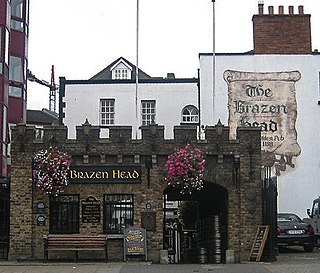
The Brazen Head is a pub in Merchant's Quay, Dublin, built as a coaching inn in 1754, on the site of a merchant's dwelling dating back to at least 1613. lt received a licence to sell ale in 1661, and the first mention of it as an inn was in 1668.
Sight 5: St Augustine and St John
The Church of St. Augustine and St. John, commonly known as John's Lane Church, is a large Catholic church located on Thomas Street, Dublin, Ireland. It was opened in 1874 on the site of the medieval St. John's Hospital, founded c. 1180. It is served by the Augustinian Order of friars.
Sight 6: St Catherine's Church
St. Catherine's Church, on Thomas Street, in Dublin, Ireland, was originally built in 1185. It is located on what was once termed the "Slí Mhór", a key route that ran westwards across Ireland from Dublin. The church was rebuilt in its present form in the 18th century by John Smyth.
Wikipedia: St Catherine's Church, Dublin (Church of Ireland) (EN), Website
Sight 7: Vicar Street
Vicar Street is a concert, performing arts centre and events venue in Dublin, Ireland. Located on Thomas Street, Dublin 8, Vicar Street has capacity for 1,050 people for seated performances and 1,500 people for standing gigs. The venue is owned by Harry Crosbie and operated by Peter Aiken. Since opening in 1998, the venue has become a popular setting for a wide range of acts including stand-up comedy, drama performances and a variety of concerts. The first artist to play on the Vicar Street Stage was local singer/songwriter Shay Cotter. Major international recording artists have performed in Vicar Street, such as Bob Dylan in 2000, Neil Young in 2003, Adele in 2008, Paul Simon and Ed Sheeran in 2011, and Lana Del Rey in 2013.
Wikipedia: Vicar Street (EN), Website, Twitter, Facebook, Youtube
Sight 8: St. Nicholas of Myra
The Church of St Nicholas of Myra (Without) is a Roman Catholic church on Francis Street, Dublin that is still in use today. The site has been used as a place of worship as far back as the 12th century. The current church was built in 1829 and dedicated to Saint Nicholas in 1835.
Wikipedia: Church of St Nicholas of Myra Without, (Roman Catholic) (EN)
Sight 9: Saint Audoen's Gate
The San Audoen Gate is an entrance gateway to Dublin through the walls of the middle forested city. The San Audoen Gate is built behind the Church of San Audoen, built in 1190, just 20 years after the Anglo-Norman conquest. This is the oldest parish church in Dublin that is still in use. The church is used as a place of worship by the Church of Ireland. Some of the floors of the old Norman church have medieval gravestones.
Sight 10: Church of the Immaculate Conception (Adam & Eve)
The Church of the Immaculate Conception, also known as Adam and Eve's, is a Roman Catholic church run by the Franciscans and it is located on Merchants Quay, Dublin.
Sight 11: St Audoen's
St Audoen's is the church of the parish of St Audoen that is located south of the River Liffey at Cornmarket in Dublin, Ireland. The parish is in the Roman Catholic Archdiocese of Dublin. The church is now home to the Polish chaplaincy in Ireland. There is an Anglican church of the same name adjacent to it.
Sight 12: Dublinia
Dublinia is a historical recreation museum and visitor attraction in Dublin, Ireland, focusing on the Viking and Medieval history of the city. Dublinia is located in a part of Dublin's Christ Church Cathedral, known as the Synod hall.
Wikipedia: Dublinia (EN), Website, Twitter, Facebook, Website Booking, Instagram
Sight 13: Christ Church Cathedral
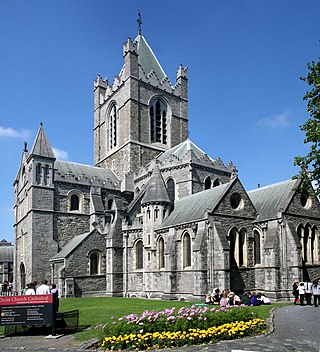
Christ Church Cathedral, more formally The Cathedral of the Holy Trinity, is the cathedral of the United Dioceses of Dublin and Glendalough and the cathedral of the ecclesiastical province of the United Provinces of Dublin and Cashel in the (Anglican) Church of Ireland. It is situated in Dublin, Ireland, and is the elder of the capital city's two medieval cathedrals, the other being St Patrick's Cathedral.
Sight 14: Wood Quay
Wood Quay is a riverside area of Dublin that was a site of Viking settlement. It is now the location of the Dublin City Council offices.
Sight 15: Smock Alley Theatre
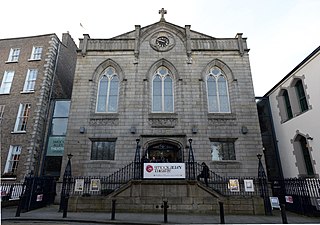
Since the 17th century, there have been numerous theatres in Dublin with the name Smock Alley.
Wikipedia: Smock Alley Theatre (EN), Website, Website Booking, Instagram
Sight 16: Olympia Theatre
The Olympia Theatre, branded since 2021 for sponsorship purposes as the 3Olympia Theatre, is a concert hall and theatre venue in Dublin, Ireland, located on Dame Street.
Wikipedia: Olympia Theatre, Dublin (EN), Website, Facebook, Website Booking, Instagram
Sight 17: National Leprechaun Museum
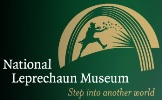
The National Leprechaun Museum is a privately owned museum dedicated to Irish folklore and mythology, through the oral tradition of storytelling. It is located on Jervis Street in Dublin, Ireland, since 10 March 2010. It claims to be the first leprechaun museum in the world.
Sight 18: Wolfe Tone Square
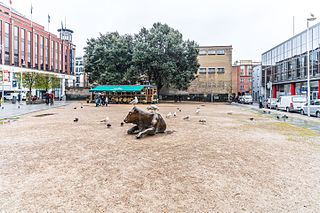
Wolfe Tone Park, also known as Wolfe Tone Square, is a public space in Dublin, Ireland. It is bounded by Mary Street to the north, Jervis Street to the east, and Wolfe Tone Street to the west.
Sight 19: Temple Bar
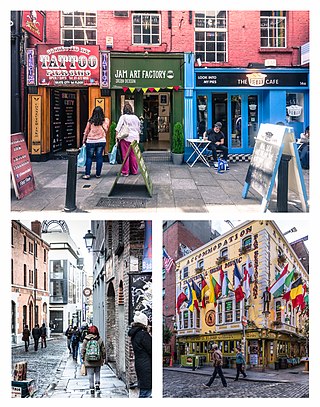
Temple Bar is an area on the south bank of the River Liffey in central Dublin, Ireland. The area is bounded by the Liffey to the north, Dame Street to the south, Westmoreland Street to the east and Fishamble Street to the west. It is promoted as Dublin's 'cultural quarter' and, as a centre of Dublin's city centre's nightlife, is a tourist destination. Temple Bar is in the Dublin 2 postal district.
Sight 20: Ha'penny Bridge
The Ha'penny Bridge, known later for a time as the Penny Ha'penny Bridge, and officially the Liffey Bridge, is a pedestrian bridge built in May 1816 over the River Liffey in Dublin, Ireland. Made of cast iron, the bridge was cast in Shropshire, England.
Sight 21: General Post Office
Get Ticket*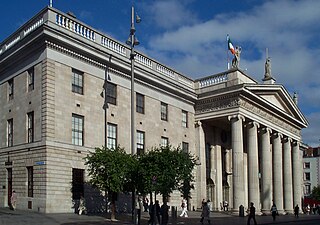
The General Post Office is the former headquarters of An Post — the Irish Post Office. It remains its registered office and the principal post office of Dublin — the capital city of Ireland — and is situated in the centre of O'Connell Street, the city's main thoroughfare. It is one of Ireland's most famous buildings, not least because it served as the headquarters of the leaders of the Easter Rising against British rule in Ireland. It was the last great Georgian public building to be erected in the capital.
Sight 22: Cúchulainn
Cú Chulainn, is an Irish warrior hero and demigod in the Ulster Cycle of Irish mythology, as well as in Scottish and Manx folklore. He is believed to be an incarnation of the Irish god Lugh, who is also his father. His mother is the mortal Deichtine, sister of king Conchobar mac Nessa.
Sight 23: Spire of Dublin
The Spire of Dublin, alternatively titled the Monument of Light, is a large, stainless steel, pin-like monument 120 metres (390 ft) in height, located on the site of the former Nelson's Pillar on O'Connell Street, the main thoroughfare of Dublin, Ireland.
Sight 24: Saint Mary's Pro-Cathedral
St Mary's Church, known also as St Mary's Pro-Cathedral or simply the Pro-Cathedral, the Chapel in Marlborough Street or the Pro, is a pro-cathedral and is the episcopal seat of the Catholic Archbishop of Dublin and Primate of Ireland.
Sight 25: Abbey Theatre
Get Ticket*The Abbey Theatre, also known as the National Theatre of Ireland, in Dublin, Ireland, is one of the country's leading cultural institutions. First opening to the public on 27 December 1904, and moved from its original building after a fire in 1951, it has remained active to the present day. The Abbey was the first state-subsidized theatre in the English-speaking world; from 1925 onwards it received an annual subsidy from the Irish Free State. Since July 1966, the Abbey has been located at 26 Lower Abbey Street, Dublin 1.
Sight 26: Universal Links on Human Rights
Universal Links on Human Rights is a memorial sculpture located in Dublin, Ireland, on the traffic island at the junction of Amiens Street, Beresford Place, and Memorial Road, close to Busáras and The Customs House. It is a sphere of welded interlinked chains and bars, 260 cm in diameter, housing an eternal flame in its center, powered by natural gas. It was commissioned by Amnesty International in 1995 and designed by Tony O'Malley. It represents the jails holding prisoners of conscience.
Sight 27: EPIC The Irish Emigration Museum
EPIC The Irish Emigration Museum, located in Dublin's Docklands, covers the history of the Irish diaspora and emigration to other countries. It was designed by the London-based design firm Event Communications, and was voted as "Europe's Leading Tourist Attraction" at the 2019, 2020 and 2021 World Travel Awards.
Share
How likely are you to recommend us?
Disclaimer Please be aware of your surroundings and do not enter private property. We are not liable for any damages that occur during the tours.
GPX-Download For navigation apps and GPS devices you can download the tour as a GPX file.
.jpg)
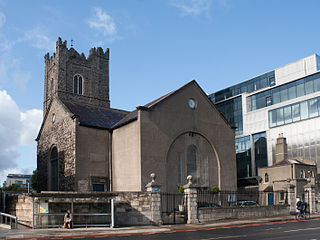
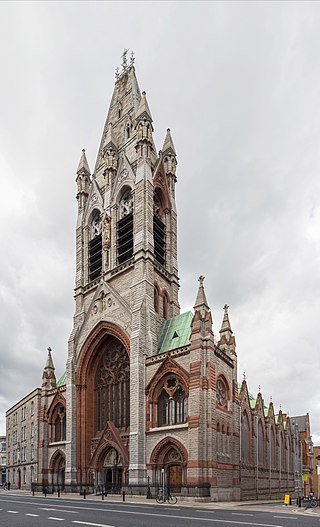
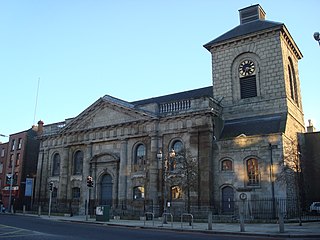
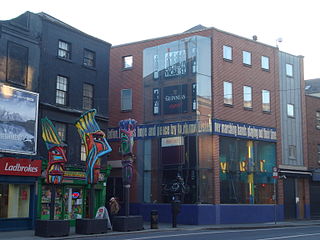
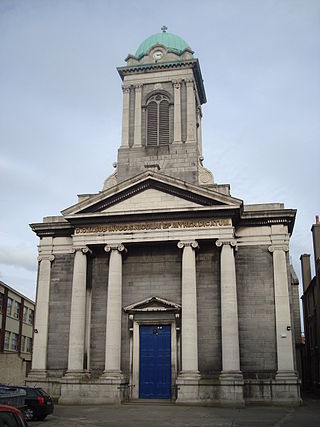
.jpg)
